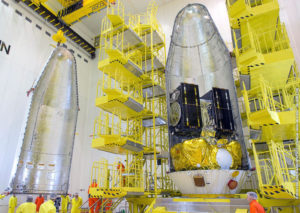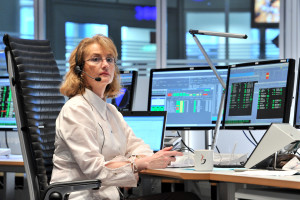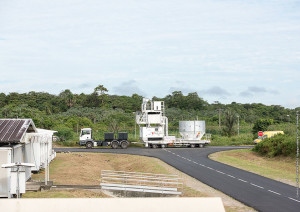Liftoff is scheduled for Tuesday, May 24, 2016 at exactly:
05:48:43 a.m., Local time (French Guiana)
04:48:43 a.m., Washington, D.C.
08:48:43 a.m., UTC
10:48:43 a.m., Central European Time
11:48:43 p.m., Moscow
The 15th Soyuz launch from the Guiana Space Center (CSG) will place two new satellites for Europe’s Galileo satellites navigation System into circular orbit. The launcher will be carrying a total payload of 1,599 kg.
Countdown and flight
– 05H: Beginning of the meeting for launcher fueling authorization (BTR)
– 04H 30MN: Launch vehicle fueling begins
– 01H 35MN: End of fueling operations
– 01H 10MN: Mobile gantry withdrawal
– 00H 5MN 10S: Key on start
– 00H 5MN: Fregat transfer to onboard power supply
– 00H 2MN 25S: Upper composite umbilical drop-off command
– 00H 40S: Ground-onboard power transfer
– 00H 28S: Lower stage umbilical mast retraction
– 00H 16S: Ignition
– 00H 14S: Preliminary thrust level
– 00H 1S: Full thrust level
– 00:00: LIFTOFF
+ 00H 1MN 58S: Jettisoning of boosters
+ 00H 3MN 39S: Jettisoning of fairing
+ 00H 4MN 48S: Separation of central core (second stage)
+ 00H 9MN 24S: Separation of 3rd stage
+ 00H 10MN 24S: First Fregat burn
+ 00H 23MN 32S: Fregat shut down and beginning of ballistic phase
+ 03H 38MN 35S: Second Fregat burn
+ 03H 47MN 57S: Fregat shut down
+ 03H 47MN 57S: Galileo FOC-M5 SAT 13-14 separation (in Orbit Plane A)




